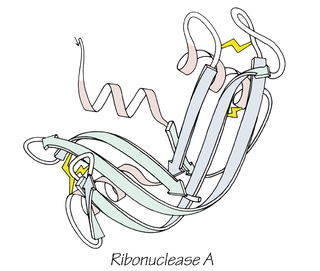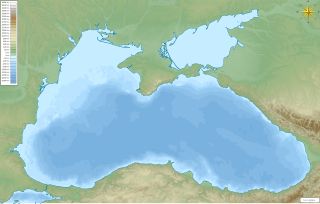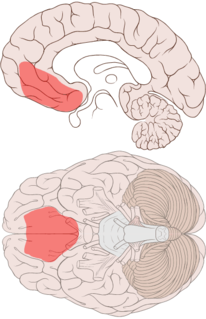 W
WA hypothesis is a proposed explanation for a phenomenon. For a hypothesis to be a scientific hypothesis, the scientific method requires that one can test it. Scientists generally base scientific hypotheses on previous observations that cannot satisfactorily be explained with the available scientific theories. Even though the words "hypothesis" and "theory" are often used synonymously, a scientific hypothesis is not the same as a scientific theory. A working hypothesis is a provisionally accepted hypothesis proposed for further research, in a process beginning with an educated guess or thought.
 W
WIn science and philosophy, an ad hoc hypothesis is a hypothesis added to a theory in order to save it from being falsified. Often, ad hoc hypothesizing is employed to compensate for anomalies not anticipated by the theory in its unmodified form.
 W
WThe Alvarez hypothesis posits that the mass extinction of the non-avian dinosaurs and many other living things during the Cretaceous–Paleogene extinction event was caused by the impact of a large asteroid on the Earth. Prior to 2013, it was commonly cited as having happened about 65 million years ago, but Renne and colleagues (2013) gave an updated value of 66 million years. Evidence indicates that the asteroid fell in the Yucatán Peninsula, at Chicxulub, Mexico. The hypothesis is named after the father-and-son team of scientists Luis and Walter Alvarez, who first suggested it in 1980. Shortly afterwards, and independently, the same was suggested by Dutch paleontologist Jan Smit.
 W
WThe analysis of competing hypotheses (ACH) is a methodology for evaluating multiple competing hypotheses for observed data. It was developed by Richards (Dick) J. Heuer, Jr., a 45-year veteran of the Central Intelligence Agency, in the 1970s for use by the Agency. ACH is used by analysts in various fields who make judgments that entail a high risk of error in reasoning. ACH aims to help an analyst overcome, or at least minimize, some of the cognitive limitations that make prescient intelligence analysis so difficult to achieve.
 W
W"Ancient astronauts" refers to the idea, often presented in a pseudoscientific way, that intelligent extraterrestrial beings visited Earth and made contact with humans in antiquity and prehistoric times. Proponents suggest that this contact influenced the development of modern cultures, technologies, religions, and human biology. A common position is that deities from most, if not all, religions are extraterrestrial in origin, and that advanced technologies brought to Earth by ancient astronauts were interpreted as evidence of divine status by early humans.
 W
WAnfinsen's dogma, also known as the thermodynamic hypothesis, is a postulate in molecular biology. It states that, at least for a small globular protein in its standard physiological environment, the native structure is determined only by the protein's amino acid sequence. The dogma was championed by the Nobel Prize Laureate Christian B. Anfinsen from his research on the folding of ribonuclease A. The postulate amounts to saying that, at the environmental conditions at which folding occurs, the native structure is a unique, stable and kinetically accessible minimum of the free energy. In other words, there are three conditions for formation of a unique protein structure:Uniqueness – Requires that the sequence does not have any other configuration with a comparable free energy. Hence the free energy minimum must be unchallenged.
 W
WThe Augustinian hypothesis is a solution to the synoptic problem, which concerns the origin of the Gospels of the New Testament. The hypothesis holds that Matthew was written first, by Matthew the Evangelist. Mark the Evangelist wrote the Gospel of Mark second and used Matthew and the preaching of Peter as sources. Luke the Evangelist wrote the Gospel of Luke and was aware of the two Gospels that preceded him. Unlike some competing hypotheses, this hypothesis does not rely on, nor does it argue for, the existence of any document that is not explicitly mentioned in historical testimony. Instead, the hypothesis draws primarily upon historical testimony, rather than textual criticism, as the central line of evidence. The foundation of evidence for the hypothesis is the writings of the Church Fathers: historical sources dating back to as early as the first half of the 2nd century, which have been held as authoritative by most Christians for nearly two millennia. Adherents to the Augustinian hypothesis view it as a simple, coherent solution to the synoptic problem.
 W
WThe Black Sea deluge is the best known of three hypothetical flood scenarios proposed for the Late Quaternary history of the Black Sea. It is one of the two of these flood scenarios which propose a rapid, even catastrophic, rise in sea level of the Black Sea during the Late Quaternary.
 W
WThe Bohemian crater, also called Czech crater, is a working hypothesis that considers the Bohemian Massif as an approximately two billion year old potential impact crater of 260 kilometres (160 mi) diameter. This is contrary to the mainstream geological theory of plate tectonics, which explains the Bohemian Massif as the result of collision of independent continental units, occurring more than 300 million years ago.
 W
WThe documentary hypothesis (DH) is one of the models historically used by biblical scholars to explain the origins and composition of the Torah. More recent models include the supplementary hypothesis and the fragmentary hypothesis. All agree that the Torah is not a unified work from a single author, but is made up of sources combined over many centuries by many hands. These models differ on the nature of these sources and how they were combined.
 W
WThe efficient coding hypothesis was proposed by Horace Barlow in 1961 as a theoretical model of sensory coding in the brain. Within the brain, neurons communicate with one another by sending electrical impulses referred to as action potentials or spikes. One goal of sensory neuroscience is to decipher the meaning of these spikes in order to understand how the brain represents and processes information about the outside world. Barlow hypothesized that the spikes in the sensory system formed a neural code for efficiently representing sensory information. By efficient Barlow meant that the code minimized the number of spikes needed to transmit a given signal. This is somewhat analogous to transmitting information across the internet, where different file formats can be used to transmit a given image. Different file formats require different number of bits for representing the same image at given distortion level, and some are better suited for representing certain classes of images than others. According to this model, the brain is thought to use a code which is suited for representing visual and audio information representative of an organism's natural environment.
 W
WThe Eocyte hypothesis is a biological classification that indicates eukaryotes emerged within the prokaryotic Crenarchaeota, a phylum within the archaea. This hypothesis was originally proposed by James A. Lake and colleagues in 1984 based on the discovery that the shapes of ribosomes in the Crenarchaeota and eukaryotes are more similar to each other than to either bacteria or the second major phylum of archaea, the Euryarchaeota.
 W
WThe Ex-Cubs Factor is a seemingly spurious correlation that was seen as essentially a corollary to the Curse of the Billy Goat. Widely published in the 1990s, the hypothesis asserted that since the appearance by the Chicago Cubs in the 1945 World Series, any baseball team headed into the World Series with three or more former Cubs on its roster has "a critical mass of Cubness" and a strong likelihood of failure.
 W
WThe Farrer hypothesis is a possible solution to the synoptic problem. The theory is that the Gospel of Mark was written first, followed by the Gospel of Matthew and then by the Gospel of Luke.
 W
WAccording to the northern cryptic glacial refugial hypothesis, during the last ice age cold tolerant plant and animal species persisted in ice-free microrefugia north of the Alps in Europe. The alternative hypothesis of no persistence and postglacial immigration of plants and animals from southern refugia in Europe is sometimes also called the tabula rasa hypothesis.
 W
WIn planetary astronomy, the grand tack hypothesis proposes that Jupiter formed at 3.5 AU, then migrated inward to 1.5 AU, before reversing course due to capturing Saturn in an orbital resonance, eventually halting near its current orbit at 5.2 AU. The reversal of Jupiter's planetary migration is likened to the path of a sailboat changing directions (tacking) as it travels against the wind.
 W
WiFood contains nutrients in which some atoms are replaced with their heavier non-radioactive isotopes, such as deuterium 2H or heavy carbon 13C. Biomolecules that incorporate heavier isotopes give rise to more stable molecular structures with increased resistance to damages associated with ageing or diseases. In a scientific study Nematodes given ifood lived 15% longer than controls.
 W
WThe Independence hypothesis is a proposed solution to the synoptic problem. It holds that Matthew, Mark, and Luke are each original compositions formed independently of each other, with no documentary relationship.
 W
WMarcan priority, the hypothesis that the Gospel of Mark was the first-written of the three synoptic gospels and was used as a source by the other two is a central element in discussion of the synoptic problem; the question of the documentary relationship among these three gospels.
 W
WThe Marcion hypothesis or Marcionite priority is a possible solution to the synoptic problem. This hypothesis claims that the first produced or compiled gospel was that of Marcion and that this gospel of Marcion was used as inspiration either for some of the canonical gospels, or for all the canonical gospels. One of the major supporter of this hypothesis is at present Matthias Klinghardt.
 W
WThe Multi-source hypothesis is a proposed solution to the synoptic problem, holding that Matthew, Mark, and Luke are not directly interdependent but have each drawn from a distinct combination of earlier documents. It encompasses a family of theories differing in the particulars of the nature and relationships of these earlier documents.
 W
WOccam's razor, Ockham's razor, Ocham's razor, or the principle of parsimony or law of parsimony is the problem-solving principle that "entities should not be multiplied without necessity", or more simply, the simplest explanation is usually the right one. The idea is attributed to English Franciscan friar William of Ockham, a scholastic philosopher and theologian who used a preference for simplicity to defend the idea of divine miracles. This philosophical razor advocates that when presented with competing hypotheses about the same prediction, one should select the solution with the fewest assumptions, and that this is not meant to be a way of choosing between hypotheses that make different predictions.
 W
WOdysseus Unbound (2005), by Robert Bittlestone with the assistance of Professor James Diggle of Cambridge University and Professor John Underhill of the University of Edinburgh, puts forth a theory that Paliki, a peninsula of Kefalonia, is the location of Homer's Ithaca, the home of Odysseus in Homer's Odyssey.
 W
WIn criminology, racial invariance refers to a hypothesis that the effects of structural disadvantage on rates of violent crime are the same for all racial groups. This hypothesis is a major component of structural perspectives on the causes of crime, such as social disorganization theory and anomie. It can be traced back to William Julius Wilson's 1987 book The Truly Disadvantaged, which argued that racial differences in crime rates are due to differences in the communities in which American whites and blacks live. Since then, it has become a major component of the general theory of crime.
 W
WIn planetary astronomy and astrobiology, the Rare Earth hypothesis argues that the origin of life and the evolution of biological complexity such as sexually reproducing, multicellular organisms on Earth required an improbable combination of astrophysical and geological events and circumstances.
 W
WIn mathematics, the Riemann hypothesis is a conjecture that the Riemann zeta function has its zeros only at the negative even integers and complex numbers with real part 1/2. Many consider it to be the most important unsolved problem in pure mathematics. It is of great interest in number theory because it implies results about the distribution of prime numbers. It was proposed by Bernhard Riemann (1859), after whom it is named.
 W
WThe somatic marker hypothesis, formulated by Antonio Damasio and associated researchers, proposes that emotional processes guide behavior, particularly decision-making.
 W
WThe two-gospel hypothesis is that the Gospel of Matthew was written before the Gospel of Luke, and that both were written earlier than the Gospel of Mark. It is a proposed solution to the synoptic problem, which concerns the pattern of similarities and differences between the three Gospels of Matthew, Mark, and Luke. The hypothesis, following an original proposal by Augustine of Hippo and expanded by Johann Jakob Griesbach, was introduced in its current form by William Farmer in 1964.
 W
WThe variability hypothesis, also known as the greater male variability hypothesis, states that males display greater variability in traits than females do. It has often been discussed in relation to cognitive ability, where it has been observed that human males are more likely than females to have either very high or very low intelligence. The sex-difference in the variability of intelligence has been discussed since at least Charles Darwin. Sex-differences in variability are present in many abilities and traits — including physical, psychological and genetic ones. It is not only found in humans but in other sexually dimorphic species as well.
 W
WThe Wilke hypothesis, named after Christian Gottlob Wilke, is a proposed solution to the synoptic problem, holding that the Gospel of Mark was used as a source by the Gospel of Luke, then both of these were used as sources by the Gospel of Matthew. Thus, it posits Marcan priority and Matthaean posteriority.